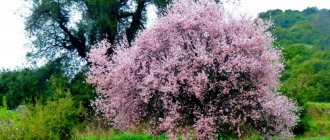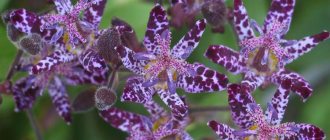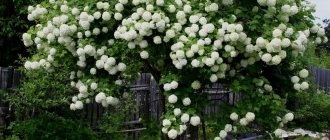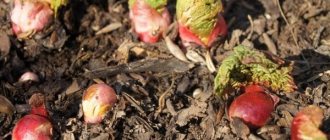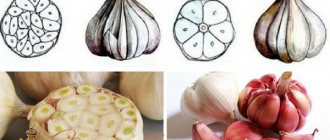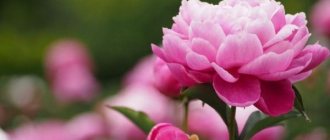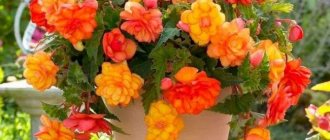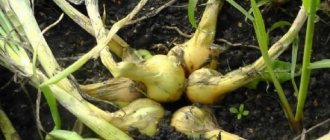Description of gerbera
Gerbera belongs to the Asteraceae or Asteraceae family and is a perennial herbaceous plant.
The bush is small, the leaves are pinnately shaped with a dissection and a leathery iridescent surface, arranged in a rosette near the root. Their length reaches 35 cm. Sometimes they are pubescent at the base.
The stem length is from 30 to 60 cm, the inflorescence basket is large. When the flower opens, its diameter is from 12 to 17 cm. Depending on the variety, it is divided into simple, semi-double or double.
The flowering period begins quite early in the spring and ends with the onset of the first cold weather.
The plant's homeland is considered to be Africa and Madagascar, tropical Asia. Another name is Transvaal chamomile.
general description
This is a herbaceous, perennial plant belonging to the Asteraceae family. The root system is strong and developed. Gerbera is characterized by its compact size and shortened stem. A dense rosette of light greenish leaves is formed in the root zone. Tall, strong, slightly pubescent peduncles grow from the middle of the rosette. Flowers bloom on them - single, large baskets with a light, yellowish-green core.
The flowers are similar in appearance to daisies (nivyanika) and somewhat reminiscent of echinacea. Gerberas come in a variety of colors and sizes; there are regular, double and semi-double. The exception is blue - a flower in nature never acquires this color.
Types and varieties of gerbera
Information about the types and varieties of Transvaal chamomile varies - according to some sources there are from 40 to 90. Every year, amateur breeders grow new varieties, hybridize and cross-breed known ones.
One of the plant classifications is based on external characteristics:
- multi-flowered;
- large-flowered with narrow petals;
- large-flowered with wide petals;
- semi-double;
- terry.
All garden gerberas known today were bred on the basis of two species - green-leaved and Jameson.
Some of the most popular varieties:
| Variety | Description | Leaves | Flowers / Flowering period |
| Jameson | Perennial, strong. The varieties Parade, Harley, Golden Serena are known. | Cirrus, with edges. Length about 20 cm. | Inflorescence diameter 10 cm. 3 weeks. |
| Garden hybrid / Garvinea Sweet Dreams | Height up to 45 cm, bush diameter up to 40 cm. | Round, fleecy. About 15 cm. | Inflorescences with a diameter of 12-15 cm. On one bush there are up to 20 peduncles. Various colors. Mid-spring - early autumn. |
| Patio Klondike | Height and diameter up to 50 cm. | Elongated, serrated, 15 cm. | Single, tongue-shaped petals. Usually white or all shades of red. July - October. |
| Abyssinian | Bush height up to 45 cm. | Ellipse shape, bush height up to 45 cm. Width up to 14 cm. The edges are wavy or jagged, with a light fluff on the surface. | Single, tongue-shaped petals. Usually white or all shades of red. Spring - autumn. |
| Orange | A small bush with a powerful root system. | The leaf shape is elliptical, collected in a rosette at the base of the root. | Orange, red, pink, purple, deep scarlet, yellow. The middle of the inflorescence is black, dark purple. July - October |
| Wright | Used to create bouquets. | They can be in the form of lobes or feathers. The edge is wavy or smooth. | Red, orange, purple, yellow, pink. The center is yellow or snow-white. Spring - late autumn. |
| Vega | Selection from America. | Up to 50 cm long, narrow, with a slight edge. | Diameter is about 13 cm, stem height is up to 70 cm. The color of the petals is bright orange. July - October. |
The stem is not cut, it must be twisted or broken off, this provokes the growth of new flower stalks with large inflorescences. During the flowering period, caring for the plant should be the most active - you need to water it abundantly, regularly feed and remove dried petioles and leaves at the very base, and irrigate the entire bush.
Subtleties of plant care
Despite the relative unpretentiousness, when growing gerberas there are some subtleties that any gardener needs to know.
Features of watering and fertilizing
At home or in greenhouse conditions, gerberas are provided with high air humidity. But you should avoid spraying flowers directly, and spray moisture near the plants. It is important to avoid excessive soil moisture or stagnation of water.
In winter, water the plant carefully and rarely, slightly moisten the substrate as it dries out. Cold water is absolutely not suitable for irrigation. For gerberas, the contrast between soil and air temperatures is detrimental.
The plant spends a lot of energy on regular, abundant, long-lasting flowering, so increased “nutrition” is necessary. Moreover, you need to remember that gerbera does not tolerate organic matter well. Fertilize flowers at intervals of 7-10 days, except for the winter dormant period.
When the growing season begins in early spring, fertilizers with a high proportion of nitrogen are used. But during the rest of the season, when gerberas are flowering, the emphasis is on complex fertilizers with a high content of phosphorus and potassium and, conversely, a minimal proportion of nitrogen.
Weeding
It is necessary to regularly weed or pluck out weeds that oppress and take away nutrition from the flowers. But mulched soil will save the gardener time and effort.
Trimming
It is produced after flowering begins. It is necessary to carry out sanitary cleaning by removing dry leaves and the stems themselves. It is recommended to cut off excess leaves in the rosette; this technique stimulates the growth of new flowers.
Temperature and lighting
Gerbera is a very light-loving crop. When growing in the country, the sunniest beds should be chosen for it, without any shading. But during the hot summer months, light shade from the midday sun is necessary. When growing at home, the pots are placed in the brightest places.
In spring and autumn, it is desirable to extend daylight hours with the help of additional illumination with special lamps. In summer, indoor varieties are taken outside or onto the balcony. Often, gardeners temporarily, during the summer, plant flowers from pots into the ground in a flower bed.
At the time of winter dormancy, the optimal temperature is +15 C degrees. The growing season of gerberas begins at the end of February. During this period, the temperature regime is maintained in the range from +15 C to +20 C degrees. The temperature at the time of flowering should be about +20 C degrees.
In greenhouse conditions, the plant blooms from early spring to late autumn. The maximum summer temperature for active growth of gerberas is +25 C degrees.
Winter care
Overwintering the plant at home should take place at a temperature of +15 C degrees. Watering is carried out rarely, slightly moistening the earthen ball. When wintering in open ground, flowers are covered with a thick layer of mulch, spruce branches, and dense agrofibre. In the northern regions, it is advisable to grow it as an annual crop.
See also
Varieties of petunias Easy Wave with description, planting and careRead
Reasons for lack of flowering
Gerbera is not only a beautiful plant, but also extremely productive. In the first year, it can produce up to 15 flowers for cutting a year, and in the second – already 20-30 pieces. It happens that gerberas may not bloom. This usually happens due to several reasons such as:
- insufficient lighting;
- lack of nutrition or, conversely, an excess of nitrogen fertilizers;
- severe disease damage.
Growing young gerberas for further planting
Gerbera seedlings begin to be prepared for the new season in the fall. If you plant the seeds in October or November, you can expect the plant to bloom in July-August.
Later planting (January-March) will not allow the garden gerbera to bloom before the onset of cold weather. In this case, it is transplanted into pots and brought into the house.
The seed method of preparing seedlings allows you to grow many plants at the same time and quite easily, without transmitting diseases and pests.
Step-by-step instruction:
- Special cassettes are filled with a mixture for seedlings.
- In each cell, make a depression (no more than 3 mm) with a toothpick and place a seed.
- Spray with water from a spray bottle with a fine nozzle.
- For a greenhouse effect, the cassettes are covered with plastic film or glass on top.
- Maintain optimal conditions: temperature about +18 °C, fairly high humidity.
- After two weeks, the film is removed, the sprouts should already germinate.
- In the future, provide diffused lighting for at least 12 hours a day. If there is not enough daylight, use phytolamps.
- Crops are regularly ventilated and sprayed with water.
- When the sprouts reach 3-5 cm in height, they are transplanted into separate containers of larger diameter using the transshipment method.
- Garden gerberas are planted in the ground provided that the night temperature reaches +12 °C.
- From the moment the seed is planted to the opening of the inflorescence, 10-11 months pass.
- If the characteristics of a variety are lost during flowering, this is the result of cross-pollination.
Features of cultivation
Gerbera is a capricious flower that loves warmth and moisture, but does not tolerate cold and stagnant water.
First of all, you need to take care of buying high-quality seeds - look at the date, because seed germination is lost after 7-8 months.
Growing seedlings
You can sow seeds in March, although many gardeners are not afraid to sow seeds from January. Seeds for growing seedlings are sown in special boxes in moist soil, pre-treated with a solution of potassium permanganate, sprinkled on top with a thin (0.5 cm) layer of peat or forest soil and moistened with a spray bottle.
Then the boxes should be covered with film or glass. Caring for seedlings consists of regularly moistening and aerating the soil. Shoots can be seen already on the 10th day. At this time, the seedlings will need good lighting, but care must be taken not to expose them to direct sunlight.
In winter, with short daylight hours, it is necessary to provide additional lighting to young plants. Fluorescent lamps are suitable for this. Plants should receive at least 12 hours of daylight.
When the first 3-4 leaves appear, the seedlings are picked. Each seedling is transplanted into a separate pot. To do this, you can use peat pots so that when transplanting into open ground you do not damage the roots of the flower. It is necessary to maintain a constant air temperature in the room of about +20 °C.
Watch the video! Review of gerbera seedlings
Planting gerberas in open ground
When the last frosts have passed, the seedlings can be planted in open ground. In season, this is the second half of May. At this time, the possibility of night frosts is reduced to zero. The strongest seedlings are selected for planting
Basic landing requirements
This flower loves warmth and moisture. It is better to plant gerberas in the most sunny place. Forest soil is the best soil for planting. The land must contain:
- manganese;
- phosphorus;
- potassium;
- nitrogen;
- magnesium.
Advice! The soil needs to be well drained to prevent moisture stagnation.
Planting and caring for gerbera in open ground
Garden gerbera is a heat-loving plant, so the planting site should be protected from the wind and well lit.
The bed is made high to prevent stagnation of moisture and accumulation of groundwater, which can lead to rotting of the root system. The soil is prepared loose and nutritious, with a drainage system.
The site is first dug up, and the soil temperature is checked before planting - it must be well warmed up. To prevent fungal infection, the soil is pre-treated with a special solution.
The hole for the bush is made of such a size that you can easily transfer the root of the seedling with a lump of earth into it. The root neck is left 2 cm above ground level. The distance between bushes when planting in the ground is about 20 cm.
How to plant. Step-by-step instruction
Flowers obtained from seeds may lose the characteristics of the original specimen.
Preparing the seedlings:
- From January to March you can sow seeds for seedlings;
- Prepare the soil by mixing turf and leaf soil with humus and sand in a ratio of 2:1:1;
- Place the seeds 2-3 mm deep in the ground and wait for germination for 2 weeks;
- After they dive:
- When 2-3 true leaves appear, they are planted in boxes;
- When 4-5 leaves appear, put them in pots.
Transplanting seedlings into open ground is carried out taking into account these features:
- The time for night frosts has passed;
- Planting in a sunny place;
- Ensuring regular watering.
Gerberas bloom after 10 months from sowing. The flowering period depends on the type of flower.
Gerbera in cold weather
Garden gerbera can be used as an annual. But almost all of its varieties are perennials, so for the winter the bush is dug up along with a lump of earth. Then they are placed in a pot of sufficient diameter and depth and transferred to a basement or greenhouse with a temperature of +10...+15 °C. Water very rarely in winter and do not feed.
Sometimes they place the pot with the plant in a dark and cool corner of the house.
If gerberas are planted in special large containers in the garden, then with the onset of the first frost they are transferred indoors for the winter - for preservation and rest.
Gerbera propagation
Since when planting seeds, loss of varietal identity is possible, sometimes another method of propagation is used - vegetative.
A three-year-old bush can be safely divided into several full sections. Gerberas are dug up at the beginning of summer and the roots are shortened to 15 cm. 2-3 shoots are left on the separated parts. Places of separation are treated with activated carbon and when planting, they are not lowered deep into the ground to prevent rotting.
After planting, young plants provide shade throughout the entire recovery period. It takes about 30 days.
Diseases and pests of gerbera, mistakes in care
Growing in the garden is not without diseases and pests. You should monitor the plant when the following signs appear on it:
| Type of lesion | Symptoms | Causes | Elimination methods |
| Root rot | The basal rosette begins to rot, the leaves become lethargic and wither, and the entire bush may die. |
| Spraying with Fundazol, Maxim. In case of death, the bush is dug up and destroyed. |
| Gray rot | The stem, inflorescences, and rosette are covered with a gray coating. |
| Solution of Fundazol, Rovral. |
| Powdery mildew | A whitish coating first forms on the stem, then spreads to the leaves and peduncles. |
|
|
| Mosaic | First, yellow-green spots appear on the leaves, similar to marble stains. Then their deformation and necrosis occurs. | The parasite is a sucking insect. | The only possible preventative measures are pre-treatment of the soil with insecticides. You should not plant gerberas in an area where plants of the Pumpkin genus previously grew. If a plant is sick, it can only be destroyed; it cannot be cured. |
| Aphid | Brown tubercles appear on the underside of leaves, stems, and inflorescences. | Infestation by parasitic insects. | Irrigation with insecticidal preparations - Decis, Karate, Actellik, Fitoverm. Pollination with ash and tobacco dust. |
| Whitefly | The leaves on which the insect feeds turn yellow and dry out, then become covered with a sticky substance and larvae. | The parasite is a small white butterfly. | Treatment with insecticides - Aktara, Konfidor, Iskra. Maintaining optimal temperature and humidity. Peppermint and nasturtium are butterfly repellents and are planted next to gerberas. |
Main difficulties and mistakes
Planting gerbera flowers and caring for them is not an easy task, since a guest from Africa is quite capricious and whimsical. Even experienced flower growers can make a mistake that will ruin all their efforts.
Loss of leaves or buds
The main causes of the problem:
- Insufficient lighting.
- Low humidity.
- Temperature violation.
To stop shedding leaves and buds, you should understand what is wrong with keeping gerbera and eliminate it. The plant is transplanted to a lighter area and watering is normalized. If the average temperature outside is below +22 degrees, this means that this region does not allow gerbera cultivation in the fresh air; the plant can only be saved by transplanting it into a greenhouse.
The foliage is turning pale
The main cause of this problem is excessive lighting. To protect the plant from the scorching rays of the sun, you should create openwork shading for it, for example, using sparse branches of a tall tree or a non-solid fence.
Red gerbera is a bright accent in any landscape composition
The tips of the leaves dry out
Factors that provoke the problem are a lack of calcium in the soil, as well as insufficient moisture. Solution methods:
- Feed the plant with a preparation containing calcium.
- To normalize humidity, place open containers of water near the planted bushes. You can organize an artificial pond; it will also become an additional decoration of the site.
The lower leaves are falling
Most often, such abscission is provoked by a lack of light or waterlogging of the soil. The bushes should be transplanted to a lighted area at some elevation to protect them from groundwater rising to the surface. You should also normalize the watering schedule and avoid overmoistening the soil.
Note! Gerberas should not be planted under trees with a lush, dense crown. Shadow is the main cause of diseases and a decrease in the decorative value of bushes.
These are the main nuances regarding the cultivation of gerberas in personal plots. The plant is quite capricious, but with due diligence the gardener’s efforts will be rewarded with stunningly beautiful flowering. Bushes with bright flowers of all shades, planted along the border, will decorate any landscape composition.
The use of gerbera in landscape design
A variety of garden gerbera flowers brightly color the garden and surrounding area.
It is planted along paths as a border, using single-color bushes or combining different tones.
Gerbera grown in garden pots or special containers is placed on balconies, verandas, and terraces. Thus, it is used as a portable decorative element.
This plant looks great both in single and mass plantings, and in combination with other flowers. Typically, pansies, bells, poppies, calendula, gentian, salvia, bidens, heuchera, cereals and conifers are chosen for this. And cut flowers in a bouquet will charge you with energy for almost a month.
